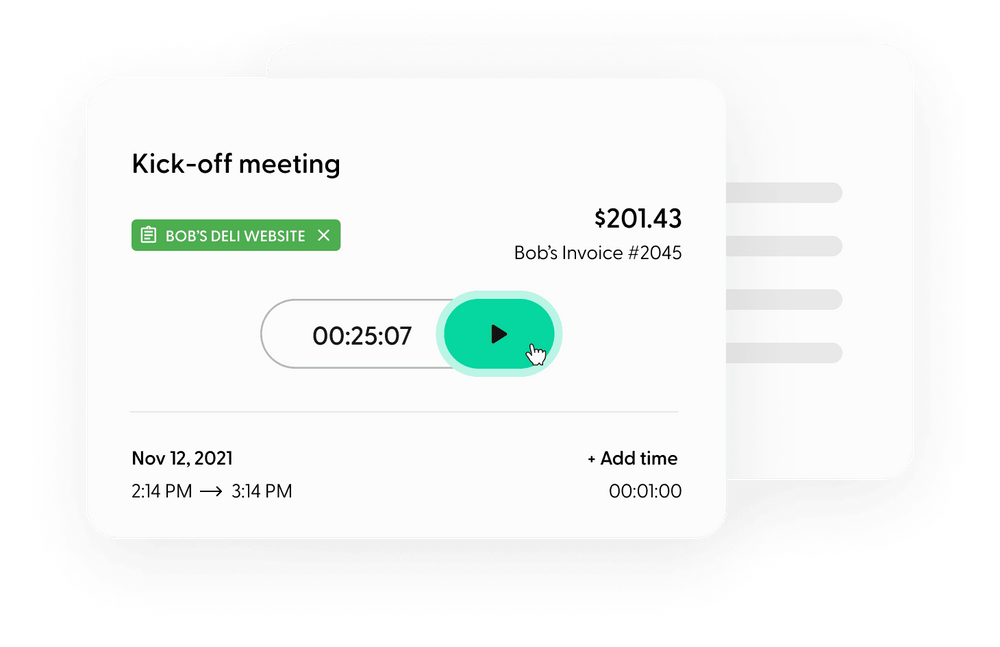To-do lists should be an essential part of any freelancer's armory! There's no better feeling than ticking off tasks - you can see the progress you're making, and your morale is rising all the time. Or is it? It may shock you that about 41% of items on to-do lists are never actually completed! How can this be?
The highest priority tasks should be done first, but what about the rest? If a task is not urgent or important, does it even need to be on there? Do you have a methodical way of working through your list? If not, then sometimes nothing gets ticked off as you feel overwhelmed and don’t know where to begin.
Many before you have learned the best way of making a task list through trial and error. Here we have gathered some of the most important lessons, so you can learn the easy way.
Why should freelancers prioritize tasks on their to-do list?
As a freelancer, you can set your own schedule, but this level of flexibility can be a curse. Procrastination is your enemy, and it can be a formidable foe for all but the most highly motivated individuals. This is why you need a list where you prioritize urgent and important tasks. Focus on only one task at a time; which one has the most pressing deadline? Which ones are important but are tasks you can afford to spend time on?
As you will see, prioritizing tasks is the first step, but then you will need to figure out when you will work on them and for how long. It's all about spending a little time on forward planning to save heaps of time later on.
We will learn about various ways in which you can write a master to-do list. The basic premise is the same for each, but there are several ways you can set your top priorities.
Technique 1: The Eisenhower Matrix or 4 Quadrant Time Management
The Eisenhower Matrix is a task management tool that will help you to sort the high-priority tasks from those you may not even need to complete. It consists of four boxes - urgent, important, delegate, and delete. Not all tasks are as crucial as others, so place the most important tasks in the first box, and each important task that is less urgent in the second box. If you delegate tasks, you can put them in the third box, and then the unimportant tasks go in the final box.
This priority matrix represents an excellent method of working out which tasks need your attention first. You can set priorities based on which tasks have tight deadlines, which have the most value to you, and which are maybe not important. This way, you will always work on the most important task first and your long-term goals will take care of themselves because you will be working on what you need to.

You could do an Eisenhower Matrix for each week or month, adding in new tasks as you go or removing some that you have realized are not important. It is a great way to stay focused and will allow you to stay on top of your priorities. It can also help when putting together a strategy for the year ahead. What are the main things you want to achieve in 2023? Which are the most crucial things that will forward your career?
Technique 2: The 80/20 rule, or Pareto Analysis
The 80/20 rule, or Pareto Analysis, works on the theory that 80% of the outcomes result from 20% of causes, meaning that there are certain aspects of your work that will give the vast majority of positive results. These are the tasks that need to be prioritized, but it doesn’t mean everything else should be ignored. Making an effective priority list is about dedicating the most time and energy to the tasks that will be most beneficial to you. At the same time, though, it's about ensuring all tasks that need to be completed are completed. Part of this is to determine which tasks are not necessary.
Using the 80/20 rule as a freelancer, you will create a priority list based on the 20% of your clients that lead to 80% of your income. This may not be an exact percentage, but you will focus on strengthening your relationship with these clients first. This does not mean neglecting the others completely, but giving more time and attention to the clients who will bring you the most income.
New clients may come in who can offer you a lot of work, or existing clients who provided a high percentage of your income may no longer be in a position to. The 80/20 rule is fluid, and your analysis will change over time based on several factors, but the most time should always be given to the clients who it would cost you the most to lose. A priority list helps to keep the most crucial tasks at the forefront, meaning nothing urgent will be missed.
Tip 1: Setting clear personal and professional goals and breaking them down into actionable tasks
When creating the master list for your tasks, one of the most important things is to make your goals clear. What are you actually trying to achieve? When will you know the task is complete and what smaller actions can be made to ensure this happens? Think of each task as something that will help with your freelancing business as a whole. You will need to pay proper attention to each one, knowing the benefits there will be.
Some of the tasks will be time sensitive with looming deadlines and can be placed in the 'mission critical' category straight away. Others will be less obvious in terms of urgency, so you will have to look a little closer to figure out where they should go on the list. The tasks that are not time specific and have the most benefit to you should be worked on after those that have to be done quickly. What will you achieve from completing the task? Will it lead to more work? Will it lead to a decent amount of money? You can stay on track by working on the most important tasks first and breaking them down into subtasks. There are several ways to do this.

The SMART criteria is an effective method for breaking tasks down in this way. It is an acronym that works as follows:
- Specific - Make sure your goal is well-defined. It has to be very clear what you are trying to achieve.
- Measurable - There has to be a measurable way in which progress toward the goal can be seen. This is where subtasks come in.
- Achievable - Is this goal actually within your capabilities, or is it over-ambitious?
- Realistic - As an extension of achievability, is this task realistic? Does it fit within the framework of your other tasks?
- Timely - What is the deadline for your project? What will be some of the mini-deadlines you will have to meet along the way to ensure the final one is achievable?
Indy has resources that can help with the same thing. The Projects tool creates a dashboard so you can keep everything relating to the project in one place with the overall status, a separate list of tasks to complete along the way, and the capability to chat with other people who are involved. You can also access Kanban boards through Indy. These are a visual tool that will help you break projects down into manageable sections so you can keep on top of the whole endeavor.

Tip 2: Dedicated blocks of time for important tasks
Time management is crucial when it comes to effective progress through your tasks. You need to set aside a dedicated block of time for each task, prioritizing those that need to be done first. Trying to work on ten tasks at once? Unless you are the kind of multi-tasking master the world is yet to see, you will find that the quality of each task is poor, and you will make little progress overall.
As well as creating a task list, you will need to plan your week accordingly, deciding what you will work on, when, and for how long. This can be adaptable, of course, because life rarely goes 100% to plan, but if you have a guide, it will really help you to prioritize.
Using effective time management will allow you to dedicate the most time to the most important tasks, allowing pockets of time here and there to get your admin done. It is rarely a good idea to work on the same task all day because your level of energy and focus will diminish as time goes on. Sometimes working on something else for a little while, taking a short break, and coming back to the main task can give you renewed energy.
Try to schedule the most important tasks early in the week. If you leave them until Friday, then you are likely to feel pressured from the start and will not do your best work.
Creating a weekly timetable, as best you can, is a great way of staying on schedule with your tasks. Some tasks will take longer than you anticipate, and others may not take as long. The most important thing is that you start with the tasks that are most pressing. That way, you can leave the less important work for later in the week and it won't matter if it has to carry over to the next week. Figure out what you need to get done each week, and make sure you schedule enough time so it can be done well.
Tip 3: Time-tracking tools
If you want to improve the efficiency of your scheduling, you can use time-tracking tools to help measure progress. These will record the amount of time spent on each task so you can see how accurate your estimates were. Maybe you will find that you are allowing more time than you think you'll need, so you can make a more optimistic estimate next time.
Or, maybe, it’s the other way around, and you need to allow longer deadlines to ensure the important tasks are done to the highest quality. You will be able to create reports using time-tracking tools so you can analyze your workflow and make changes when needed.
When you use a time-tracking tool, you will get to see how long different tasks will take, which will help you to prioritize. There may be some weeks when you need to set aside a couple of days to work on a specific task to ensure enough time is spent on it. Sometimes you might find that you can set aside an hour each day to focus on something you struggle to find time for. The point is that when you make a schedule, it rarely runs like clockwork. Using time tracking, you can get a realistic idea of how you can improve.
Indy has a free time tracking tool that is easy to use. You can track your time automatically with just the click of a button. If you charge by the hour, this will enable you to create an accurate invoice. When you need to know how long you are spending on each project, it will give you the best information to help create a schedule going forward.
Conclusion
So as we have gathered, it’s one thing to make a list of tasks but quite another to make sure it’s a productive list. There are several techniques that will help us to ensure prioritization. Let's have a quick recap:
- Organize your tasks so that the most important ones are worked on first. There are several methods that can help you with this, such as Eisenhower's Matrix, the 80/20 method, or time scheduling. The key takeaway from all of these is that you must work on the tasks with the most pressing deadlines first.
- Break each task down. You need to make sure each task is achievable and will be done on time by breaking it down into subtasks that will help you to hit your overall target. Time tracking can help you to stay on schedule with this.
- Manage your time. Once you have your list and have prioritized the different tasks, you will need to work out how much time you plan to spend on each one and when you will fit them in during the week. This shouldn’t be used as a stick to beat yourself up with if you take longer than expected. It’s more of a guide to ensure you try and get to each task that is important. It will help you to adjust the schedule next time.
In addition to the time tracking and project tools already mentioned, Indy has a host of tools to help you stay on schedule. We will help you organize your projects so you can focus your time and energy on getting the work done. Indy makes the process simple so you can get going quickly.



